Showing 81–90 of 122 results
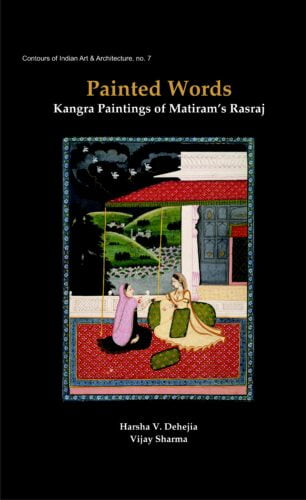
Matiram’s sonorous poetry embellished by Purkhu’s sensuous imagery, transport us into the rarefied realm of the Rasraj, where romance interwoven with poignancy, bring alive the emotion-laden shringara rasa. Both lyrics and imagery have been seemlessly sculpted into visual poetry.
No celebration of ritikavya can be complete until we have enjoyed the sonorous poetry of Matiram and the sensuous images of Purkhu.
With well sculpted words and lyrical rhythms Matiram takes us into the rarefied world of the nayak and the nayika, their amorous exchanges, the sensuality of loving glances, the charged moments of romantic feelings, the heart throb of belonging, the poignancy of longing and above all the fulfilment of desire.
Line by line and doha after doha, Matiram leads us into the emotionally charged world of shringararasa and for those of us who are chastened by harishringara we go from one level to another till we hear the flute of Krishna.
And when we find that these sonorous words of Matiram have been brought alive by none other than Purkhu and his school of painting under the patronage of Sansar Chand of Kangra our joy is doubled and Matiram’s words become visual poetry.
In the hands of Purkhu words become lines, emotions take on a colour and desire becomes palpable through the magic of his kalam.
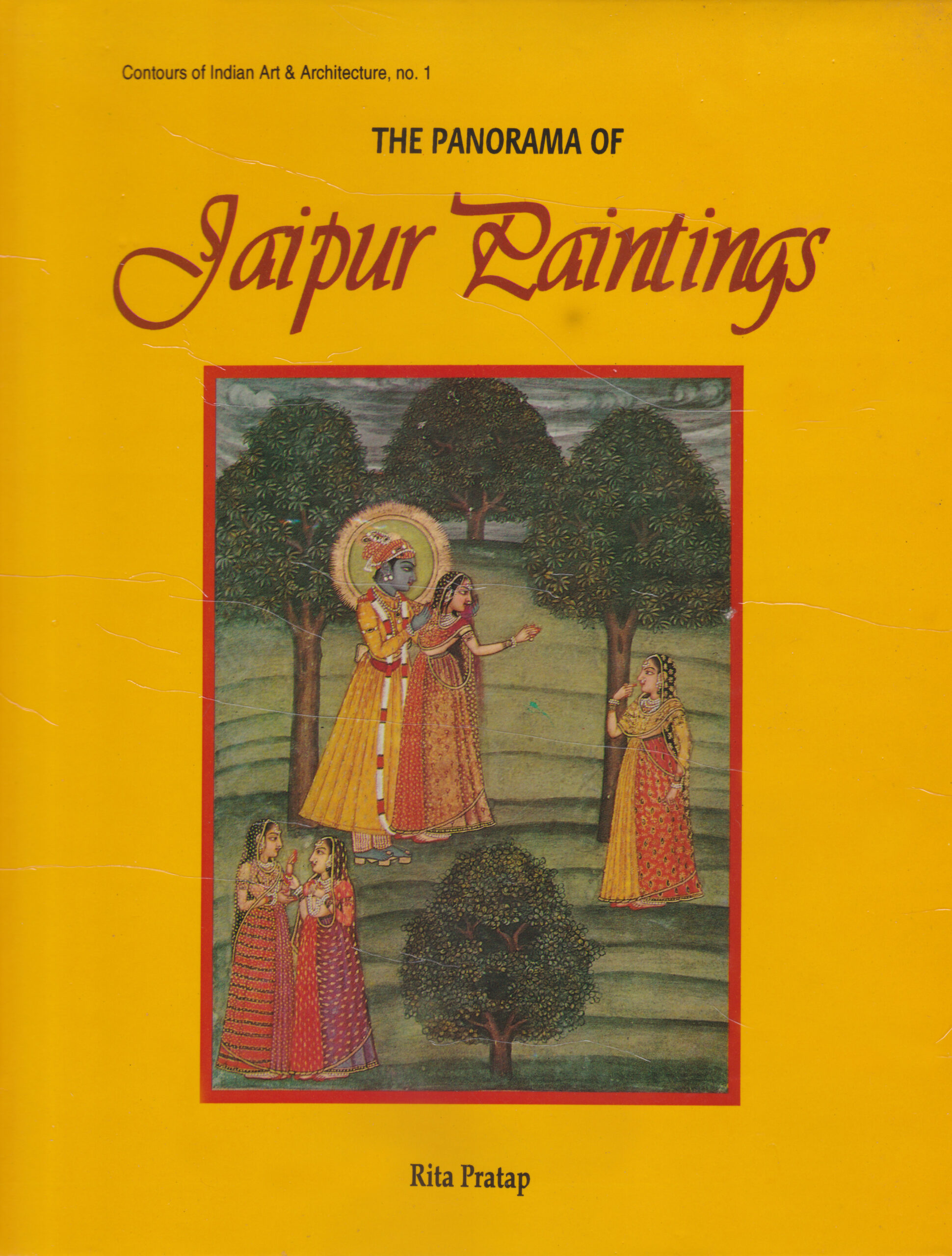
The book offers an exclusive study of the Jaipur School of Miniature Painting, in all its different articulations with focus on its historical evolution, style, form, motifs, artists and its linkages with other forms of creative expression.
Over the centuries, Indian art tradition came to have its differentiative regional, even local, specificities. For instance, the Jaipur School of Painting. Isolating itself from other Rajasthani genres like Mewar, Bikaner or Bundi, the Jaipur school set out its independent, distinctive identity, sometime during the early years of the 18th century. Historically, it was the time when the once-glorious Mughal empire was beginning to disintegrate and many of its court painters discovered, in Jaipur, a conducive haven under the generous patronage of Sawai Jai Singh (ad 1699-1743). As the capital of Rajasthan, the erstwhile Rajputana, Jaipur evokes memories of Rajput chivalry, and legendary romance. And it unmistakably represents the beautiful in art and the magnificent in architecture leave alone its fabulous cultural traditions. The School of Painting that thrived has here for over 150 years since Jai Singhs time, covers a whole diversity of themes: both sacred and secular, evolving a veritable panorama of contemporary life and culture. And yet collectively, notwithstanding their exposure to the earliest character of Mughal art, Jaipur miniatures are steeped in tradition drawing inspiration from Indian mythology, epical/classical literature, and folklore. For the first time, Dr. Rita Pratap offers an exclusive study of the Jaipur School of Miniature Painting, in all its different articulations with focus, among other aspects, on its historical evolution; its style, forms and motifs; its artists and ateliers; and its linkages with other forms of creative expression: literature, music, sculpture, dance. For her meticulous analysis she has drawn on the miniatures from private collections and museums around the world. Besides including bibliographic references and a glossary of non-English words, the book is embellished with representative specimens of Jaipur miniature paintings, exquisite figures and photographic reproductions in colour.

Krishna Steals the Parijata (Parijataharana) tells the story of Krishna forcibly taking away Parijata from Indra to make Satyabhama happy, which finds expression in the paintings of different kalams Chamba, Palam, Early Kangra, Mature Kangra, Bundi, Bikaner and Nepal from different sources.
Krishna Steals the Parijata (Parijataharana) is a collection of a few accounts, edited by Harsha V. Dehejia, on Krishna forcibly taking away Parijata from Indra, which finds expression through the paintings of different kalams. Christopher R. Austin relates this event to the citations and narrations in Mahabharata and Harivamsha, wherein the focus is on Krishnas effort to appease his perturbed wife Satyabhama, by fulfilling her desire to have Parijata from Indras abode. Mahendra Kumar Mishra approaches this incident from Sarala Mahabharata angle. Here the narrative and episode are little different though the centre theme and characters remain the same.
The third narrative is in Hindi by Narmada Prasad Upadyaya. He approaches this story from a different viewpoint that by forcibly taking away the Parijata tree from Indraloka, Krishna broke Indras Himalayan pride. The main characters in the episode are same here too: Krishna, Indra and Satyabhama. In the final article, Harsha V. Dehejia provides a visual narrative account of the event. The story looks almost similar to that of Austin with little more narration and a few additional characters. The sequentially given paintings tell the story faster than the literature.
In a nutshell the book is an exemplar attempt to visually covey a well-known, well-rooted story where Krishna is the central character.

Living as a family is what all human beings even members of the animal kingdom like lion, tiger and elephant do and aspire for. A family togetherness depends upon the role each member plays. A pious couple the Kogatas have seen Lord Shiva’s family as the ideal and have beautified this book with pleasing illustrations of the divine parents and children in different moods followed by charming and delightful verses.
Vasudaiva Kutumbakam — the world is my family. Indian culture teacher us this motto, i.e. to treat all beings, animate and inanimate, in the world as our family members.
Our small family is run by a father and a mother. The father works and earns money, and with it the mother runds the houshold. Both look after the children in the best way possible.
In the Hindu pantheon there is a famous family or Parivaar — that of Lord Shiva comprising his consort Parvati and children Ganesh and Kartik. If we look at the vehicles or vahanas used by this family, we find each one is an enemy or prey of the other, but the composite picture shows a unified family without any sign of animosity. We should take Lord Shivas family as an example.
A family togetherness depends upon the role each member plays, and the members sacrifices, devotion to ideals and respect to family values form the ladder to success.
The Kogatas have also seen Lord Shivas family as the ideal, and have beautified this book with pleasing illustrations of the divine parents and children in different activities and moods, followed by charming and delightful verses.
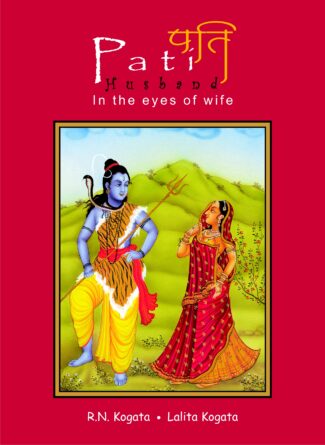
From time immemorial a family Þ consisting of father, mother, son, his wife, and their childern Þ has been accepted as a sacred institution in all societies Þ urban, rural, tribal or uncivilized, or even among animals to a certain extent. In the family, besides love and affection, the main factors cementing the bond between members are some virtues and morals like obedience, faithfulness, honesty, and, above all, chastity, not only for women but also for the men. In Hindu thought Lord Shiva and Goddess Parvati are considered the ideal parents as well as the ideal couple. In four books Þ Pita, Maa, Pati and Patni Þ pleasingly embellished with self-explaining paintings, Mr K.N. Kogata and Mrs Lalita Kogata have extolled the roles, activities, and moods of these important members of the first family with charming and delightful verses.
A man has many roles to play in life a son, brother, husband, householder and father. The most important of these roles is that of husband. Only after becoming a husband a man becomes a householder and father. Epics, Puranas and other literature extol the role of a husband and list a number of dos and don’ts so that he can lead a chaste life and earn virtues and good reputation for himself as well as for his family. It is said that a husband is the source of dream and destination, he sets the way and speed, his positive attitude results in creativity, inspiration and happiness in the family, and for any wife, the husband is the ultimate truth and shrine. This book is a small attempt to express the love, affection, respect and feelings of a wife for her husband with the objective to inspire all men to become caring husbands. In Hindu thought Lord Shiva is considered a perfect husband, and women observe vrats on Mondays and pray that they should get good husbands like Shiva. The Kogatas have beautified the book with pleasing illustrations depicting Shiva as the perfect husband and Uma or Parvati as the perfect wife.
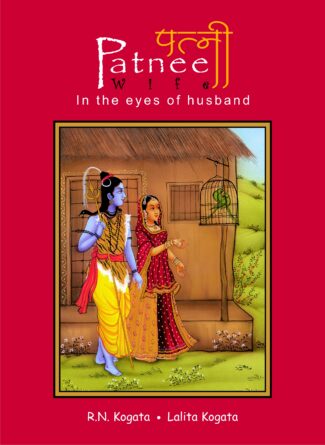
From time immemorial a family Þ consisting of father, mother, son, his wife, and their childern Þ has been accepted as a sacred institution in all societies Þ urban, rural, tribal or uncivilized, or even among animals to a certain extent. In the family, besides love and affection, the main factors cementing the bond between members are some virtues and morals like obedience, faithfulness, honesty, and, above all, chastity, not only for women but also for the men. In Hindu thought Lord Shiva and Goddess Parvati are considered the ideal parents as well as the ideal couple. In four books Þ Pita, Maa, Pati and Patni Þ pleasingly embellished with self-explaining paintings, Mr K.N. Kogata and Mrs Lalita Kogata have extolled the roles, activities, and moods of these important members of the first family with charming and delightful verses.
A woman has many roles to play in life a daughter, sister, wife and mother. The most important of these roles is that of wife. Only after becoming a wife a woman becomes a mother which brings fullness to her life. Epics, Puranas and other literature extol the imporance of wife to a husband. She is a friend, philosopher and guide to him. In times of plenty all relatives and friends flock to a man like bees and ants to a ripe fruit, but at times of adversity a man will find only his wife by his side to give support, solace and encouragement. Probably because of this characteristic of a wife is she called better half. This book is a small attempt to express the love, affection and feelings of a husband for his wife with the objective to inspire all women to become good and virtuous wives worthy of adoration by their husbands. In Hindu thought Parvati or Uma or Sati is considered an ideal wife, who together with her consort Shiva make a perfect couple or aadarsh dampati. Another made-for-each-other couple the Kogatas have beautified the book with pleasing illustrations of Parvati and Shiva as the ideal couple. The delightful verses add sweetness and charm to the book.
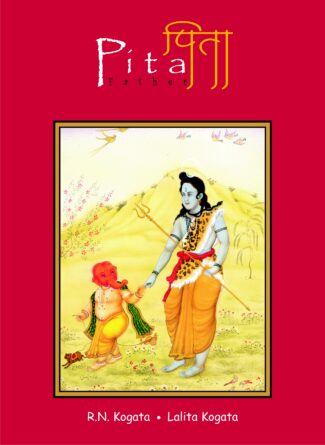
From time immemorial a family Þ consisting of father, mother, son, his wife, and their childern Þ has been accepted as a sacred institution in all societies Þ urban, rural, tribal or uncivilized, or even among animals to a certain extent. In the family, besides love and affection, the main factors cementing the bond between members are some virtues and morals like obedience, faithfulness, honesty, and, above all, chastity, not only for women but also for the men. In Hindu thought Lord Shiva and Goddess Parvati are considered the ideal parents as well as the ideal couple. In four books Þ Pita, Maa, Pati and Patni Þ pleasingly embellished with self-explaining paintings, Mr K.N. Kogata and Mrs Lalita Kogata have extolled the roles, activities, and moods of these important members of the first family with charming and delightful verses.
Taittiriya Upanishad says, Pitru devo bhava consider your father as a god. We owe our existence to our father and mother, and in that sense they are our creators and therefore, gods. We cannot see God, the Creator of this universe, in person and offer our respects to Him. To make matters easy for us, God created father and mother and presented them before us in flesh and blood. By serving our father and mother we can pay back at least a little portion of the debt we owe to God for our existence and for the stage we have reached in life. Our epics, Puranas, Upanishads, etc. all extol the father as of utmost importance in society. Subhashita Manjari mentions five persons who are to be treated as father one who gives birth, one who initiates, one who teaches, one who feeds, and one who protects us from fear. Practically speaking, our biological father does all these five activities he is the cause of our birth, he initiates us as a brahmachaari by performing the Upanayanam ceremony, he teaches us how to live in the world with honour and dignity, he feeds us, and he protects us, his children, from all kinds of fear. As such, our efforts to serve and please our father should be fivefold. Aadi Shankaraachaarya sees, in Annapurnaashtakam, Lord Shiva and his consort Parvati as father and mother. In a similar way, the Kogatas have seen Shiva as the universal father and portrays him in the book along with mother Parvati in different activities and moods in pleasing illustrations which are further beautified by sweet and delightful verses.
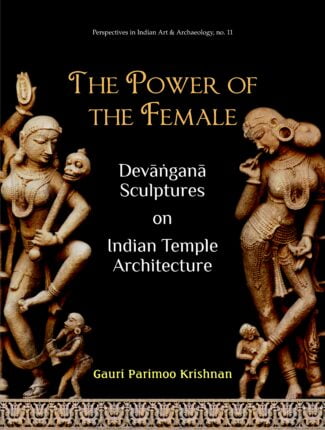
Sculptures of numerous engaging devanganas the surasundari, apsaras and alasakanya figures decorate walls, ceilings and doorways of classical structures in India. The book offers dynamic meanings of these figures in religious and cultural consciousness of India and how they symbolize and illustrate the power of the female in Indian traditions.
This book is an offering to New Art History taking the study of Indian classical sculptural art and traditional Indian iconography to newer heights of interpretation. Sculptures of female figures in classical Indian architectural traditions have enjoyed a special placement and significance. Numerous engaging images of devanganas the surasundari, apsaras and alasakanya figures decorate walls, ceilings and doorways of Hindu temples in India. Viewing the devangana sculptures as a continuation of the yaksi sculptures of Buddhist and Jaina monuments and the concept of primordial mother goddesses of the Vedic times, this challenging work on the devangana sculptures studies the morphology, iconology and semiotic meanings of the devangana figures and their placement in monuments of Gujarat, Rajasthan and Madhya Pradesh between the eighth and twelfth centuries ce.
In a path-breaking effort, the work focuses not on the much-discussed erotic and sexual connotations but explores their dynamic meanings in the religious and cultural consciousness which help to symbolise ßthe power of the femaleû in representational artistic traditions of India. For this, copious architectural and religious texts are examined. With more than 250 illustrations of temple sites and detailed sculptures, this book enquires into the imagery of these figures. A significant aspect of the research is its critiquing of the existing literature on the subject to come up with novel viewpoints and use of tools like dhvani theory, psychoanalysis and feminism to interpret the devangana sculptures.
The book will benefit young researchers, cultural enthusiasts and erudite scholars of Indian art and architecture focused on religious and cultural significance of Indias sculptural heritage.
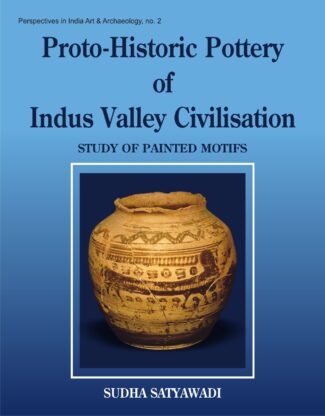
Dr. Satyawadis book is the first-ever study of painted pottery motifs of the Indian subcontinent (earliest times to 1750 BC). It explores the genesis and development of popular forms and classifies art motifs into their different genres.
In the 1920s was found one of the worlds oldest, most mysterious civilizations: the Indus Valley. Which, in view of the relatively more recent archaeological evidence, could possibly have evolved from a much older, indigenous culture: of about nine millennia ago some 6000 years before the growth of Mesopotamian urbanism or about 2000 years before the Egyptians. Among a variety of excavated material remains, pottery affords a significant clue that influences archaeologists conclusions. Despite many a scholars avowed fascination for the pottery of the Indian subcontinent since John Marshalls days, Dr. Satyawadis book becomes the first-ever, exclusive study of its art motifs: from the earliest times to 1750 bc Marshalling a whole diversity of painted-pottery motifs: from potsherds, from excavatory reports, and from as many as twenty archaeological museums of India, it explores the genesis of popular themes/forms and how they developed from their most primitive character to mature Harappan period with sharp focus on their creative purpose, stylistic/formal variants and their spatial-temporal parameters. Also surveying extensively the painted pottery of Indus Valley: of both pre- and post-Harappan cultures, the author painstakingly classifies art motifs into their different genres: religious, ritualistic, decorative, superstitious, and personal. And into their different forms too, like geometrical, floral, faunal, other. In her effort to probe the beginnings of pre-Harappan pottery motifs, the artist in Dr. Satyawadi visualizes their continuity not only in mature Harappan cultures, but even in contemporary folk and tribal art of India: almost in their pristine, primitive form keeping alive, from generation to generation, an insistent, inherently powerful tradition, despite the ravages of time. The author also tries to trace the linkages between the painted motifs (on pottery) of Indus Valley and other old-world cultures, notably, Mesopotamian, Egyptian, Afghan, Iranian, and Baluchi. With one hundred thirty six photographic reproductions, this study is supplemented by over 650 line-drawings which, (all beautifully copied by the author herself straight from museum exhibits), try to capture the panorama of protohistoric art motifs in their essential variety and pristine splendour.
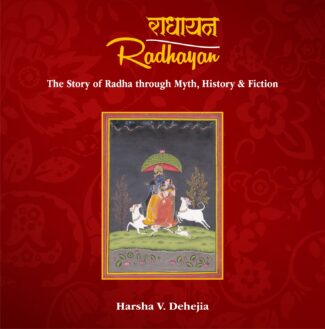
This volume weaves an enchanting story of Radha with a multicoloured thread, where myth blends into history and fiction challenges reality and Radha emerges in all her poetic glory in this spellbinding story. Here in miniature paintings, through line and colour, Radha comes alive as a multidimensional, many-nuanced paragon of love. This is Radhayan.
Of all the mythic characters in the Hindu pantheon none is more enigmatic and evocative than Radha. Appearing for the first time in Jayadevas Gita Govinda, where she is the ultimate beloved, she traverses political dynasties, royal ateliers and social barriers to emerge as a consort of Krishna. Brought alive by poets, developing a colourful presence in the hands of painters, dancing through prosceniums and acquiring a lyrical life through songs, both classical and popular, Radha is present in homes and havelis, celebrated by the the samajika and the rasika, has a presence in temples and roadside shrines as a symbol of pure and eternal love. And yet there are so many questions about her life; poets differ in their portrayals of her, historians argue, dancers claim her through their interpretations and for the common person she is now a shringara rasa nayika and now a goddess. But Radha stands steadfastly alone refusing to be bound down by poets or potters, dancers or singers. Harsha V. Dehejia weaves an enchanting story of Radha with a multicoloured thread, where myth blends into history and fiction challenges reality and Radha emerges in all her poetic glory in this spellbinding story.
Vijay Sharma and his team of artists bring Radha colourfully alive with miniature paintings, for it is there rather than sculpture that Radha resides. She is essentially kavyamaya, her origins are in the minds of poets, it is there that she grows, dallies and evolves. And while her voice is heard in songs and her footsteps resonate with dancers, it is in miniature paintings, through line and colour, that Radha comes alive as a multidimensional, many-nuanced paragon of love.
This is Radhayan.
| There are no products |